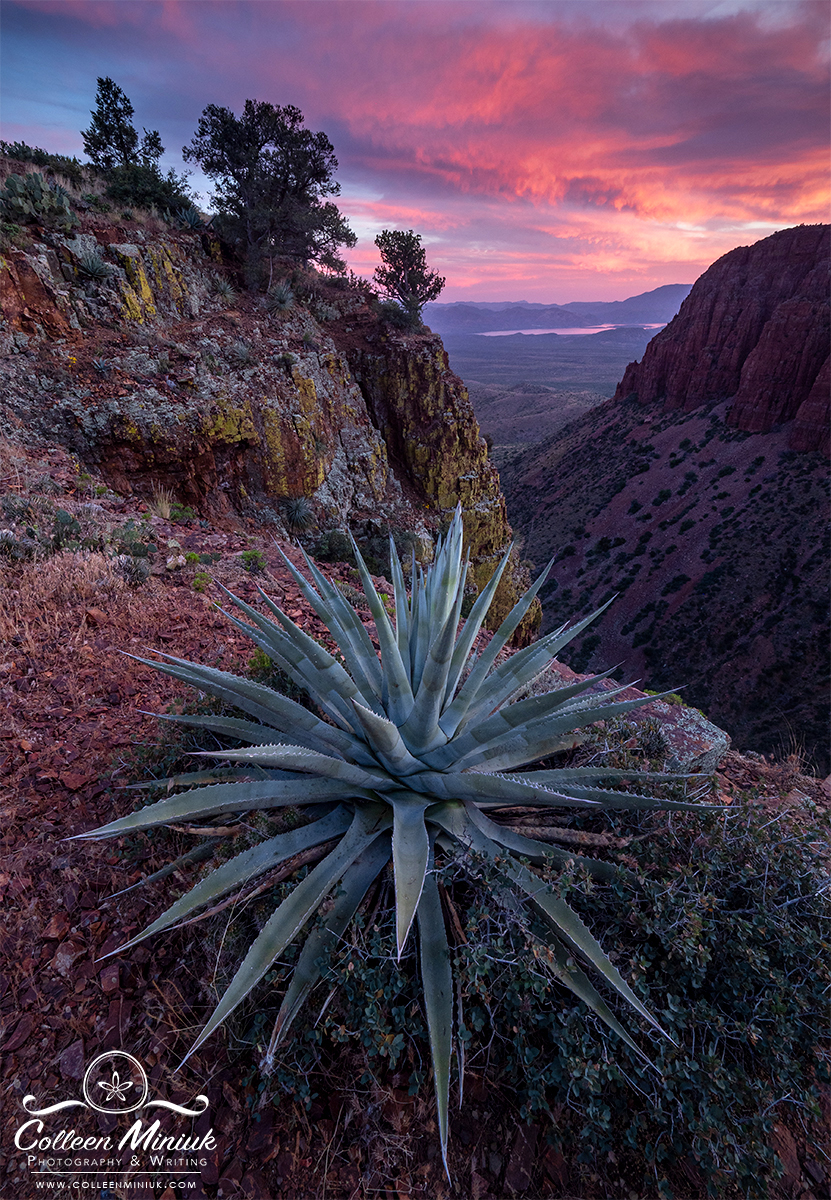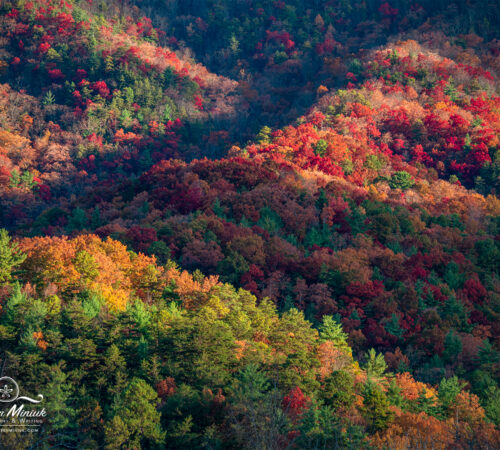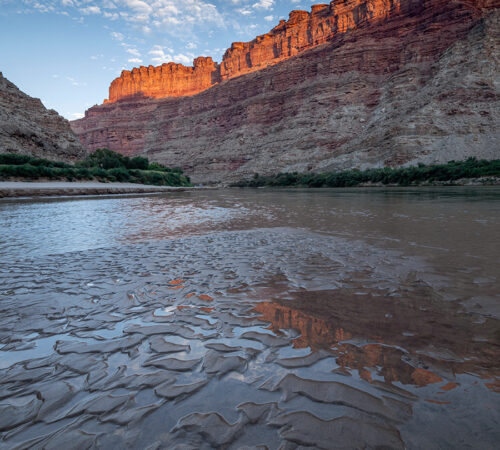The Impossibility of Creativity

Dear Bubbles:
Why is the creative stuff so darn difficult?
~Mark
Dear Mark:
It sure feels hard sometimes, doesn’t it?
Early on in my photography career, I spent much of my time photographing iconic scenes around the southwestern United States. I’d visit a pretty place, find a composition I’d previously seen in a magazine, calendar, or postcard, and wait for “good” light. Assuming I paid close enough attention the weather conditions, I could make a decent, if not salable, photograph with impressive consistency. It was easy. You’d think repeated success would have felt encouraging. It did not. I disliked the images I made. My approach was routine. I was bored out of my fricking mind.
Things started to change in winter 2013 during my third Artist-in-Residency term in Acadia National Park. I had grown weary again using the same approach I used in the southwest after my first two residencies and personal visits starting in 2009. After attempting to find my own way in my winter residency, I recall saying to myself while trying to photograph an original composition in an obscure place along the coast at sunset, “You know, this would be so much easier if I just had good light.” Being creative was exhausting! It was also one of the most fulfilling feelings I’d ever experienced in not just photography, but also my life.
I’ve come to learn more about creativity since then and now understand that it takes much more time, mental and physical energy, motivation, and imagination to bring a unique photograph—a creative expression—to life. It’s substantially harder in every aspect than photographing a predefined compositions using the same tripod holes others (sometime millions of others…) have previously used in striking lighting conditions. To quote Jimmy Dugan (played by Tom Hanks) from the movie A League of Their Own, though, “It’s supposed to be hard. If it wasn’t hard, then everyone would do it. The hard is what makes it great.”
But let’s back up and start at the beginning. According to the Merriam-Webster Dictionary, the word “creativity” is defined in two ways:
- The ability to create. (“Create” is further defined as “to bring into existence; to produce through imagination.”)
- The quality of being creative. (“Creative” is further defined as “marked by the ability or power to create; having the quality of something created rather than imitated.”)
My school teachers taught me to never use a derivative of the word I was trying to define in a definition (like Merriam-Webster did), so I prefer to refer to the more common definition scientists use: “An idea that is novel, good, and useful.” To break down that definition:
- “Novel” means “new and not resembling something formerly known or used; not previously identified; original or striking especially in conception and style.”
- “Good” is defined as “of favorable character or tendency; bountiful; fertile; handsome; attractive; free from injury or disease; not depreciated; commercially sound” (and others that aren’t applicable to this discussion).
- “Useful” indicates “capable of being put to use; of a valuable or productive kind.”
If you’re scratching your head after reading these, you aren’t alone. Despite the attempts to clarify it, interpretations differ. To definitively state that something qualifies as novel would require us to know all things in existence. We don’t and can’t. So what we think might be new in our world and what is actually new in the world could be two different things. On top of that, what each person deems is satisfactory and valuable in their own lives is subjective. With so much wiggle room in these definitions, it’s safe to say what’s good, useful, and even creative to one may not be to another.
As if that weren’t enough, no one has any idea how creativity actually works. Oh sure, there’s the Wallas model of creativity which outlines what researchers agree constitutes the process to generate innovative ideas. (Read more about this model in my earlier post, Keeping it Fresh). Despite extensive study, though, scientists still don’t know what triggers the elusive “Aha!” moment, that magical moment when a spark births a new concept or thing (seemingly out of thin air). Brains are complicated organs, and creativity requires many parts across both left and right hemisphere (not just the right!) to work together. Some of it is understood. Most of it is not.
We’re only getting warmed up, and already, you can see we run into challenges. It’s not easy to define; it’s not easy to understand how to do it. Even in its roots, creativity doesn’t seem easy. But there are additional reasons why “this creative stuff is so darn difficult.” We get in our own way…
- Some of us grew up feeling like we were not creative, and thus, as adults, we feel like there’s no hope for us to be creative now. Perhaps you heard this from authority figures (e.g. teachers, coaches, parents). Perhaps you’ve told yourself this. In both cases, they are false narratives. And if you’re capable of creating false narratives in your own head, you can create true ones. (It’s actually evidence you have the power to create, which, in fact, is a definition of creativity.) Don’t believe me? Try this: have you ever solved a problem at work? Have you ever made a recipe while missing an ingredient or two? Have you ever struck up a conversation with a stranger on the street? Those are creativity in action, in everyday life. From a more scientific perspective, author James Webb Young suggested what creative experts have come to agree upon, “An idea is nothing more nor less than a new combination of old elements.” They believe that it only takes two existing things put together in a new and different way to develop something innovative. This means if you’ve ever had two thoughts cross your brain ever in your lifetime—not even at the same time, and they don’t even have to be good or useful thoughts—you have the capacity to be creative. In other words, you are creative. Reread that last sentence over and over if you have to. No more telling yourself otherwise. No more excuses (I know you’ve had two thoughts in your lifetime…). You may have to work hard to dig it up and put it on the table, but don’t throw unnecessary barriers in your path. Don’t make this harder on yourself than it already is.
- Society has portrayed creative types in negative light. You’ve likely heard plenty about starving artists, mad scientists, and lonely geniuses. Society has stereotyped creative individuals as mentally ill, poor, impulsive, flighty, unstructured, deviants, insomniacs, and hermits. I mean, when they sell it in a package that looks like that, it’s not exactly a fate many of us aspire to. It is true that studies have shown correlations among lower levels of depression, bipolar disorder, and schizophrenia with increased creative output. But there are ample examples that show creative output is not dependent on the existence of any of these conditions. In fact, equal amounts of research shows innovation evolving frequently from positive moods. I’ll say it again: everyone has the capacity to be creative. I know I’ve made jokes otherwise about it before, but you truly do not have to suffer for your art.
- We imagine creativity looks like a sexy, magical unicorn prancing across a rainbow. OK, I made that up, but the point is: we hold onto unrealistic notion that being creative should feel natural and uncomplicated and result in the blissful state of flow all the time. Sometimes it does, but do you know what the creative process really looks like most of the time? Hard work, failing, experimenting, joy, repetition, failing, chaos, flow, boredom, failing, excitement, and failing. Getting your hands dirty. Taking risks. Messing things up beyond repair or recognition. As Scott Adams, the creator of Dilbert cartoon, said, “Creativity is allowing yourself to make mistakes. Art is knowing which ones to keep.” Venturing into the unknown requires you to shake up what you know to be true. It sidesteps certainty, threatens habits and routines, and questions assumptions. That’s not comfortable for anyone. Should you gather up enough courage and confidence to face the toll, which is no simple task, I can say from experience (as I’ve said in previous interviews) that “Once the shackles of habit, expectations, and conformity fall off and you taste this downright delicious creative freedom, it’s almost impossible to look at photography, the world, or even life in the same way again.” In other words, it’s worth the steep price of admission.
- Creative output doesn’t always serve a defined purpose or lead to a tangible result—and we expect it to. I play my flute when song moves me. I dance to Mozart in my kitchen—sometimes in my pretty pink pointe shoes (while holding on to a chair). I write poetry when I feel like words fit the moment. Look, I’m not going to be the next James Galway, Misty Copeland, or Shakespeare. I’m not trying to be either. While I spent 40 years as a type-A goal-oriented overachiever, I now use an autotelic approach for my photography (and life), which means I do things for the experience alone as the main goal with no expectation of any future benefit or outcome. If I have any goal at all for my photographic work, it’s to supply the Preparation stage in the Wallas model of creativity—feeding my brain knowledge and ideas—trusting that the two marbles clinking around in my mind will at some point deem the input good and useful enough to create something novel during the Aha! moment, even when I have no clue when or where it will occur. Embrace the silly, stupid, weird, and completely random thoughts for the value they bring alone. Choose to take the pressure off performance and achievement to focus on the fulfillment in the process. Turn creativity from a noun—something you get—into a verb—something you do.
- We try too hard. Raise your hand if this train of thought has ever gone through your head while at a scenic location: “I’ve traveled 2,000-plus miles. I’ve spent thousands of dollars to get here. I have one morning to take a great photograph of this spot. The sky is about to explode into color. I know there’s a photograph around here somewhere. I have to find something different to photograph. Must. Be. Creative. NOW!” If so, I’m gonna grab you both shoulders and tell you what my friend in eight grade used to tell me when I got overly excited about something: “Calm your bad self down.” Stop trying so hard. We spend so much time trying to optimize our situations, trying to live up to unrealistic expectations, trying to be different, and trying to be original when all we need to do is show up to each and every moment as our authentic self. You are already a different and original human being. You already see the world through a unique lens. Forcing yourself to be different while you strong-arm an Aha! moment to occur—especially a perfectly-executed one especially in a place you know nothing about—only prevents it from happening. Besides, if you’re running around looking for a photograph, you’ll miss the beauty of the present moment entirely.
- We are reluctant to play as adults. Children, especially those young enough to still possess an undeveloped prefrontal cortex (which develops around 4th and 5th grade and attempts to filter silly and stupid ideas), do not stop to consider whether they are creative. They just play. They make up imaginary worlds and characters and stories no matter how ridiculous it all sounds to the outside world. What happened to us as adults? Where did it go? It’s still there, but it’s buried under piles of societal judgments like immaturity, irresponsibility, and senselessness. Who cares what other people think? It’s your life, your art, your photography. Besides, I don’t recall getting a memo that said adulting had to be void of play, fun, and imagination. It is possible to be a hard-working, motivated, reliable, conscientious adult AND be a goof off in unstructured play time. If you received a memo suggesting otherwise, I’d advise shredding it immediately. As Picasso said, “The chief enemy of creativity is good sense.” And as author Ursula Leguin said, “The creative adult is the child who survived.”
- We mistakenly associate creativity with the use of external tools or effects. Learning new techniques and technologies like intentional camera movement, Photoshop filters, or drone photography can expand our toolbox. But buying a new pan does not make you a better cook. Tools in themselves do not create original ideas or photographs on their own. We do. The act of inventing something new, like a unique expressive image, originates from within using our problem solving skills, imagination, and to a much greater extent than most realize, attitude. Shift your focus on understanding mindfulness, creating meaning, and tying human perceptions with visual language and watch your ability to express your individual connection with the landscape get easier, regardless of how many tools you have in your box.
Author Ben Okri said, “Creativity is the art of the impossible.” We may not be able to come to a universal agreement on the definition of creativity nor fully understand the process behind it, but we can accept that the creative path will be a challenging one at times. By managing our own expectations, attitude, and effort as we travel along it, we may find the journey leads to thrill of discovery, a fresh perspective on our artistic expressions, and self-pride. To get there, though, as author Deepak Chopra said, “You must find the place inside yourself where nothing is impossible.”
Be well, be wild,
~Bubbles
Have a question about photography, art, and/or the creative life? Need some advice? Send your question to Dear Bubbles at [email protected] to be possibly featured in a future column post. (If you’d prefer a different display name than your real first name, please include your preferred nickname in your note.




